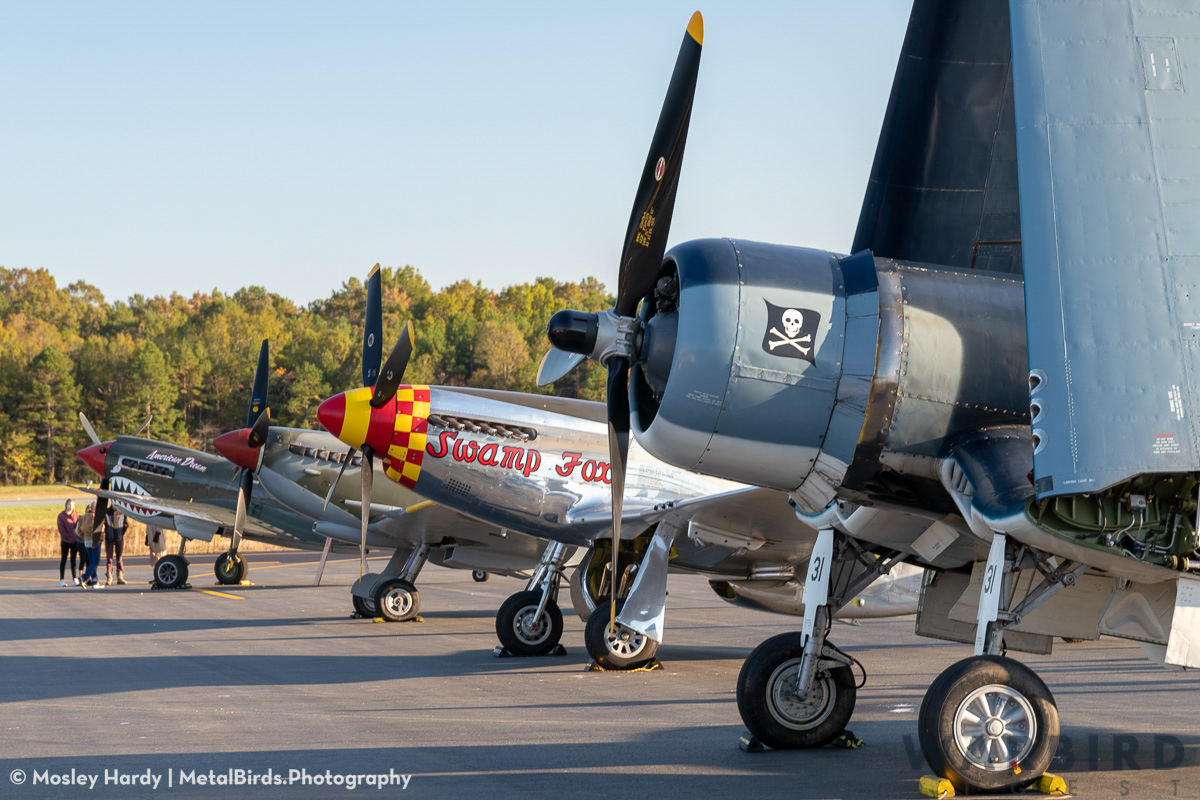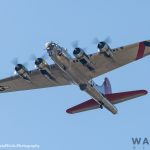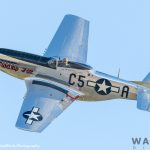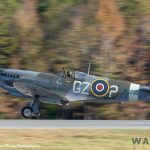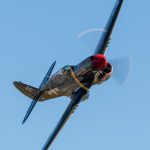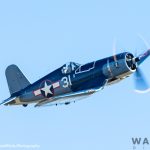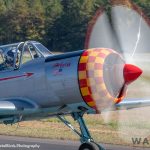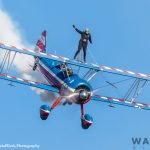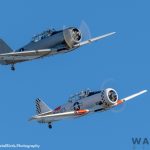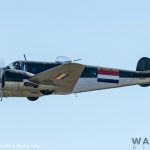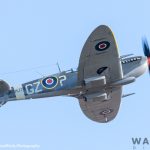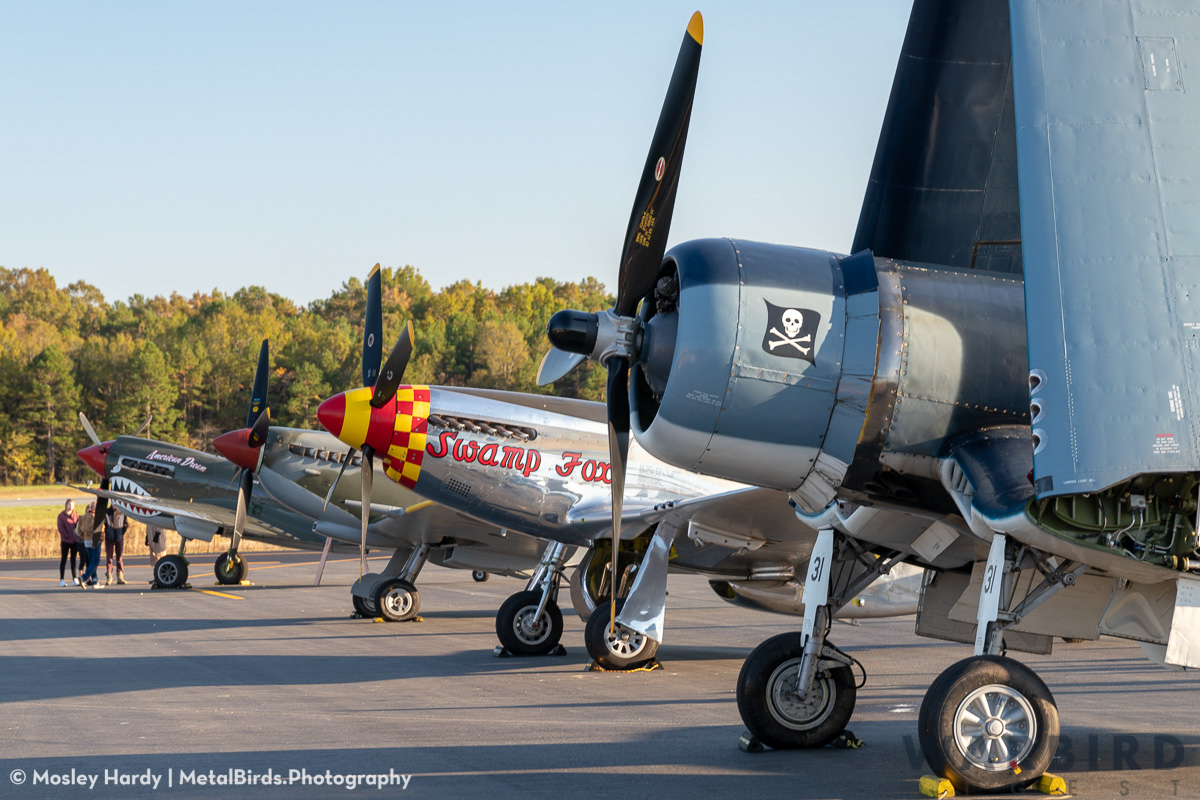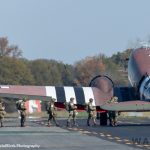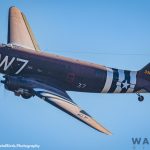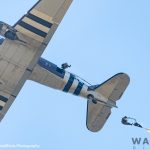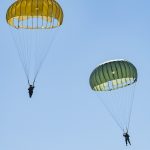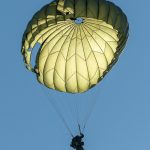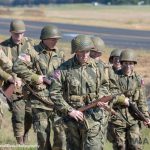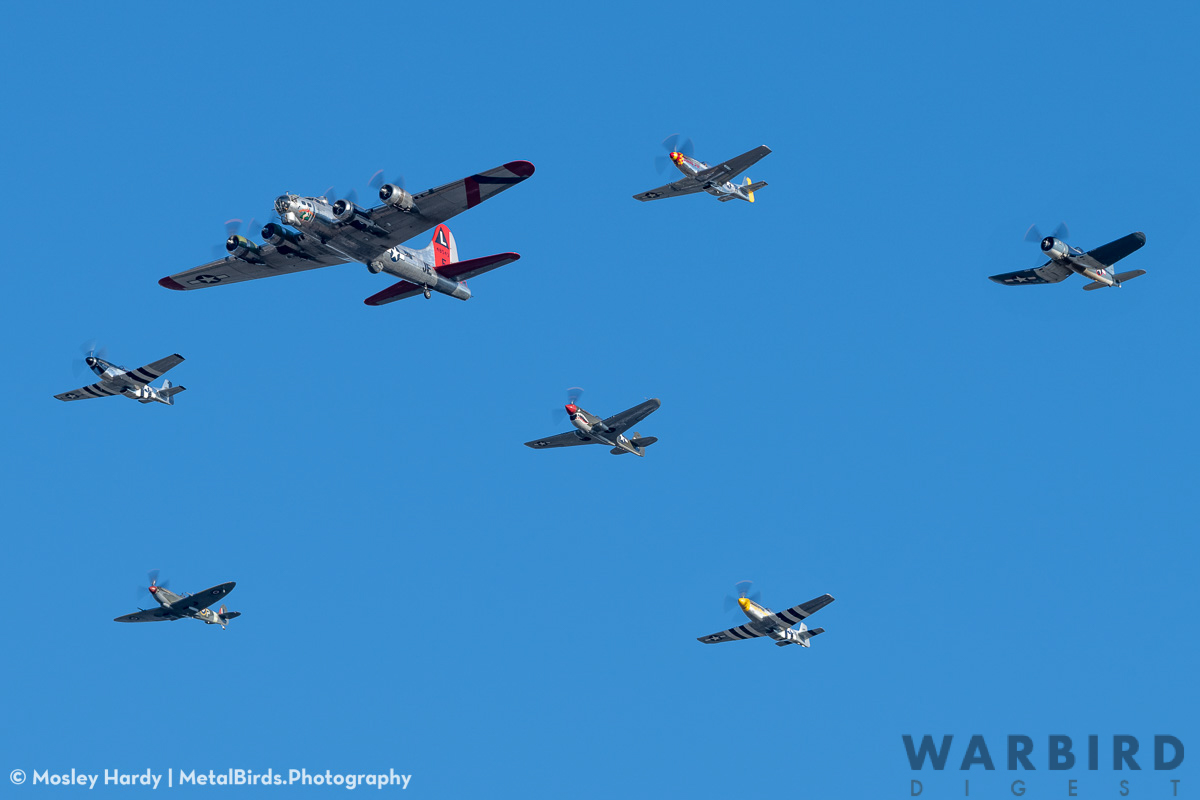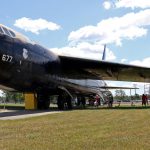Warbirds Over Monroe 2018
by Mosley Hardy
The Show: Now in its eleventh year, the Warbirds Over Monroe airshow is a joint production by the non-profit Warriors & Warbirds group and the City of Monroe . It takes place every year on Veteran’s day weekend at the Charlotte-Monroe Executive Airport in Monroe, North Carolina. This year’s event took place on November 10th and 11th and featured performances by:
Boeing B-17G Flying Fortress 44-8543 Madras Maiden – Erickson Aircraft Collection but operated by The Liberty Foundation
Supermarine Spitfire Mk.IXe MJ730 – Military Aviation Museum
Goodyear FG-1D Corsair Bu.92508 – Military Aviation Museum
North American P-51D Mustang 44-63810 Angels Playmate – Alex Newsom
North American P-51D Mustang 45-11439 Quicksilver – Scott Yoak
North American P-51D Mustang Swamp Fox 44-74202 – RT Dickson
Curtiss P-40N Warhawk 42-104977 American Dream – Warbird Adventures
Douglas C-47 Skytrain 43-30652 Whiskey 7 – National Warplane Museum
Focke-Wulf 149 – Warriors and Warbirds
TORA TORA TORA Bomb Squad – Commemorative Air Force
North American SNJ-5C – Larry Morris
North American SNJ-5 – John Mazza Jr.
Super Stearman with Wing Walker – Greg Shelton Airshows
Beechcraft AT-11 Kansan 42-3069 – Allen Aviation
Pitts S-1S – Chefpitts Air Shows
Pitts S-2B – Keith Davis
Aero Vodochody L-39 Albatros – Larry Labriola
Red Thunder Air Show Team
World War II Airborne Demonstration Team
As well as numerous static aircraft displays and a WWII re-enactor encampment featuring American, German and British troops.
The Experience: From the moment you arrive at Warbirds Over Monroe, it’s obvious that this event is different from most other air shows. The first thing you’ll notice is the parking, which is well thought out and runs smoothly. Since the airfield is located adjacent to an industrial park, the show is able to use multiple business parking lots, allowing traffic to be spaced adequately and served efficiently by a fleet of shuttle buses. This arrangement, along with excellent police traffic control, allows relatively low-stress entry to the show and an easy exit at the end of the day.
As you enter the show through one of the two entrances, you’re already relatively close to the flight line. The event typically has a handful of chalets at show center available for rental to businesses or groups, but there are also some with individual reserved seating available for advance purchase. Except for the chalets, all seating is first-come first-served, with chairs or blankets that you bring, so staking out your preferred spot on the flight line is job #1.
Once your chairs are in place, it’s time to explore. The usual layout is two “hot ramps” with static exhibits and food vendors in between, and the reenactor encampment at the far south end of the field. One of the most appealing features of the show is how relatively “open” it is. Unlike many other events where the hot ramp is well away from, and usually inaccessible to the crowd, at Monroe it’s easy to get “up close and personal” with the warbirds and their crews on the hot ramps unless an aircraft is launching or recovering. During those moments, the well-trained ground crew shepherds the crowd back to an appropriate distance,, but you’re still plenty close enough to feel the aircraft’s power and prop wash and even smell its exhaust. This really make you feel connected to what’s going on.
After you’ve checked out all of the warbirds, it’s time to walk over to the WWII re-enactor encampment. If you’ve never been around serious re-enactors, then you’re in for a surprise. Far from “grown-ups playing dress-up,” almost every re-enactor is an amateur historian who works obsessively on getting each detail of their kit as period-correct as possible. They know the history behind every piece of their gear and how it fits into the story of the war. More than anything, they love sharing that knowledge.
If you arrived early, you’ll have had plenty of time to check out everything on the ground, grab a bite to eat and return to your chairs before the flying starts. First up is usually a parachute jump demonstration from the World War II Airborne Demonstration Team. They leap from either the National Warplane Museum’s D-Day veteran Douglas C-47 Skytrain known affectionately as Whiskey 7 because of her markings, or the City of Monroe’s very own Curtiss C-46 Commando named Tinker Belle. Like the rest of the re-enactors at the show, this team uses period-correct equipment, from the jump plane to their uniforms and parachutes. No modern steerable ‘chutes here – if they jump at the wrong time they land in the wrong place, period. It’s one the most accurate representations of a WWII parachute jump that you can see without a time machine.
Once the flying starts it really doesn’t let up until the show ends. Warbird demos (often with pyrotechnic effects) are mixed in with aerobatic performers. The show organizers always book enough acts to allow the Airboss to present a fast-paced show that never lags all the way to the finale (with lots more pyro) around 3 PM.
Formation Finale Story: This year however, Pete Hovanec, the Director of Warbirds Over Monroe Airshow 2018 had a problem. As the pilots’ briefing started on Saturday morning… his show didn’t yet have a finale.
All air shows are at the mercy of weather, scheduling and mechanical issues, but for a show like Warbirds Over Monroe that is almost entirely dedicated to WWII warbirds, those variables play an outsized role. A number of performers this year, including both of the pre-announced headliners, required last-minute replacement due to mechanical issues. Added to that were regional weather issues that threatened the arrivals of many of the others and forced most to come in on Saturday morning. Those factors combined to change this year’s show significantly, which is why the finale had to be created at the morning briefing.
According to Air Boss George Cline, “We had issues getting aircraft into Monroe on Friday due to low ceilings (400 Overcast) for the better part of the day. We had a 10 am brief set for Saturday and a 12 noon start time. We moved the brief to 1030 to give the Warbirds time to set out early Saturday morning and arrive in time for the FAA Brief. We got the word to all about the delayed briefing time and delayed start time. Everyone got there!
After I knew what we would have arriving, I reworked the schedule and conferred with Tora Pyro. I put together a different schedule to conclude with the fighters (3 P-51’s/1 Spitfire/1 Corsair/1 P-40). I asked Scott “Scooter” Yoak to be the flight lead for the fighters and brief the B-17 and all aircraft. I explained to him what I wanted, and he made it happen. All but one pilot was formation qualified and he was the stinger aircraft behind the others. The conclusion is what you see in the photo along the Pyro from Tora Pyro.
When the weather does not cooperate, you must regroup. All the performers we use at Monroe are professional and willing to support the show in whatever ways they can. I developed the plan, but the pilots made it happen!
Pete Hovanec knows what warbirds we need at this show and he goes all-out to book them and bring in the best and most interesting aircraft. Pete and the City of Monroe are to be congratulated for putting on a CLASS show.”







